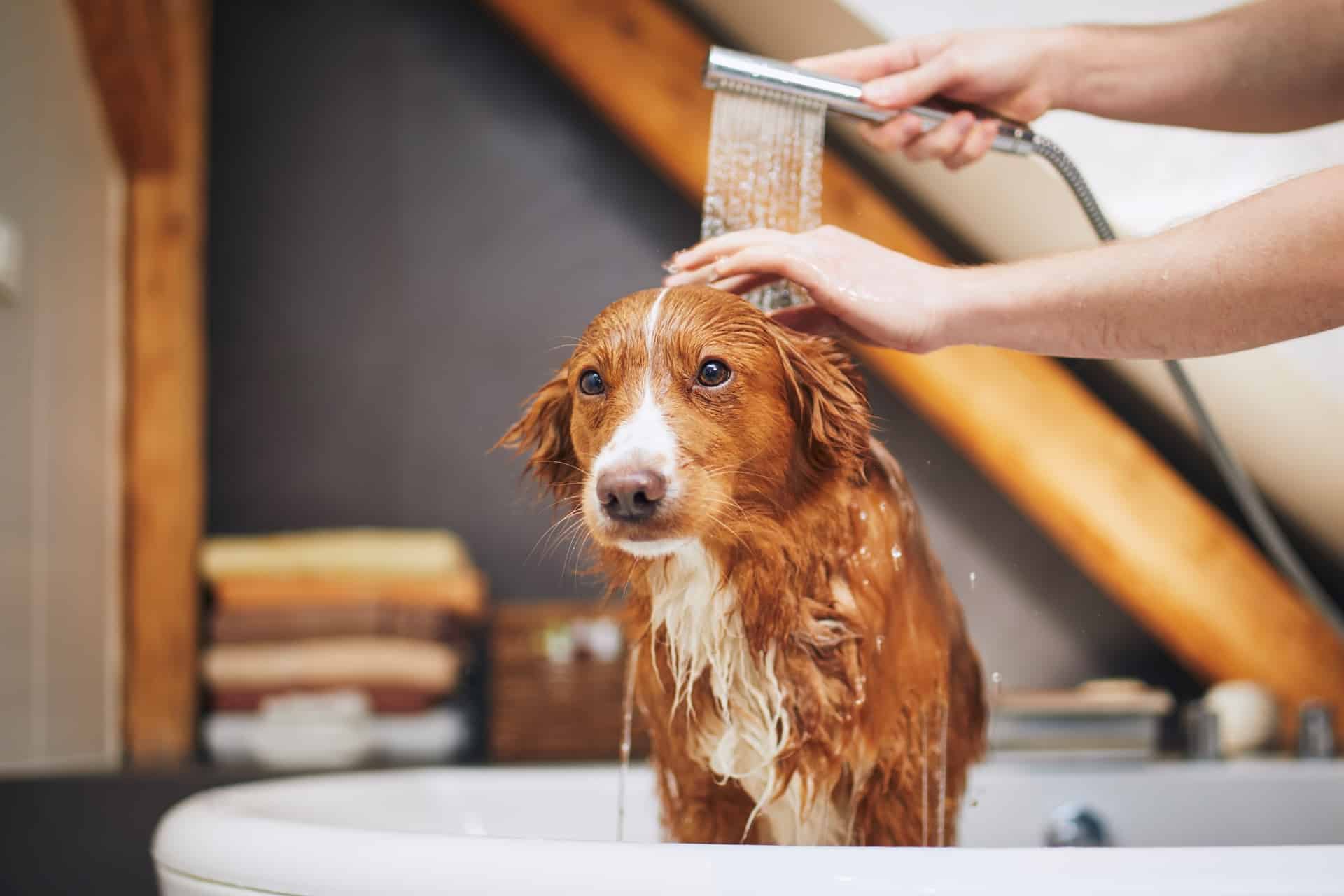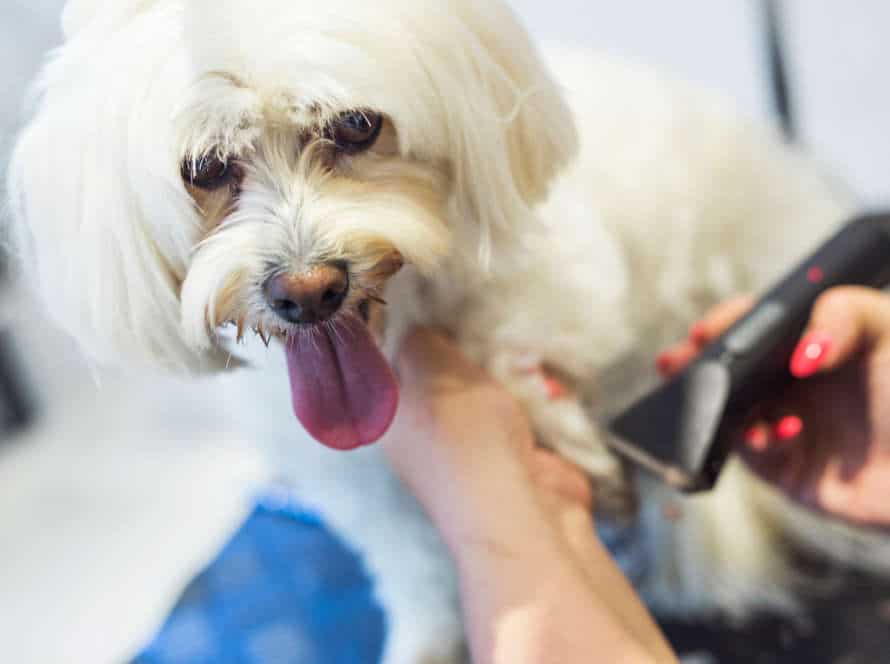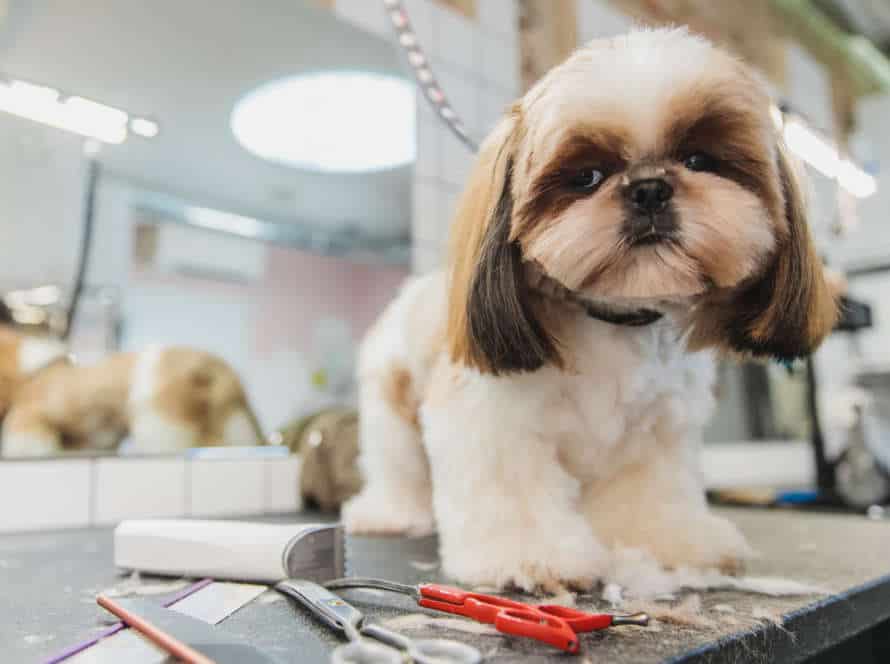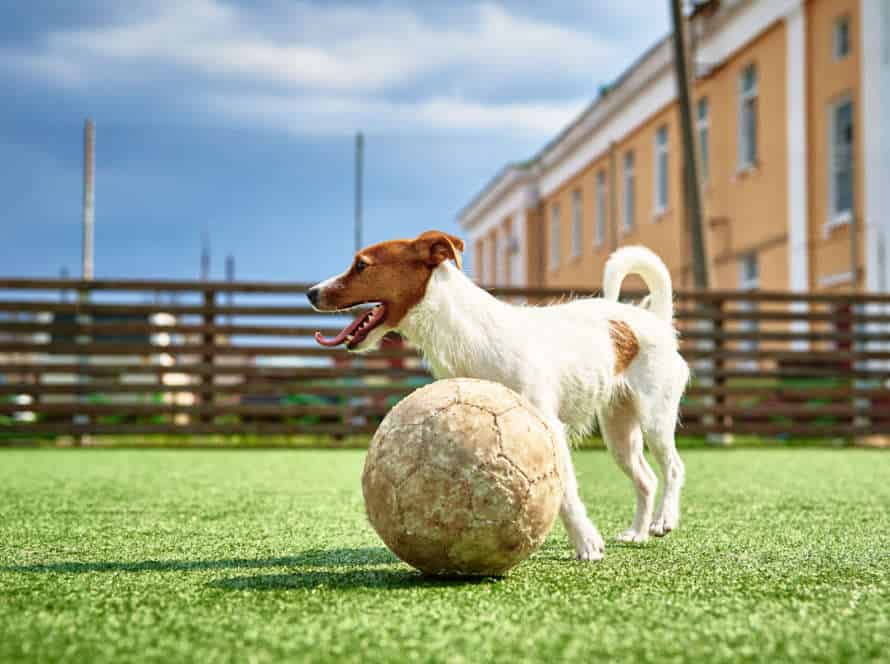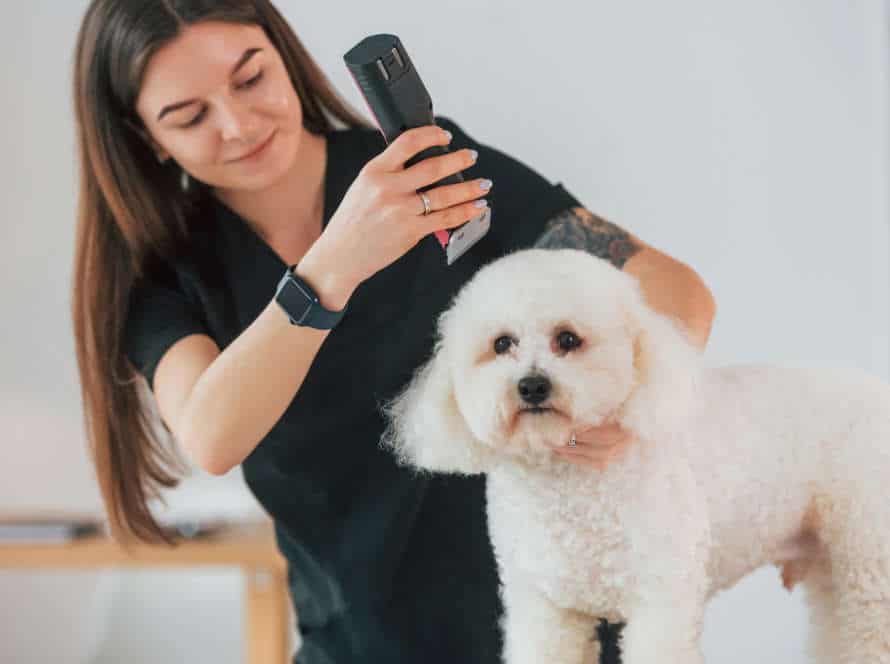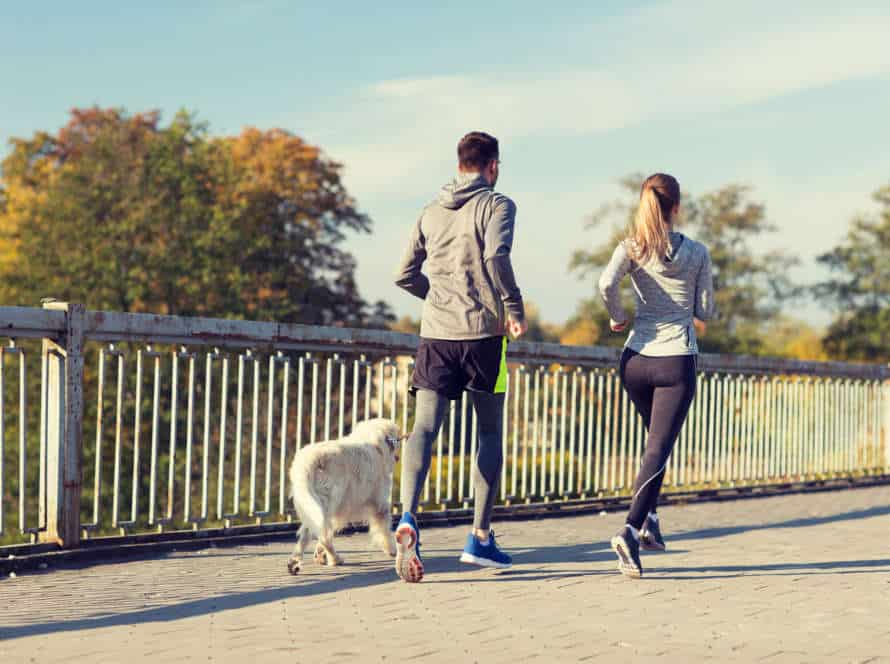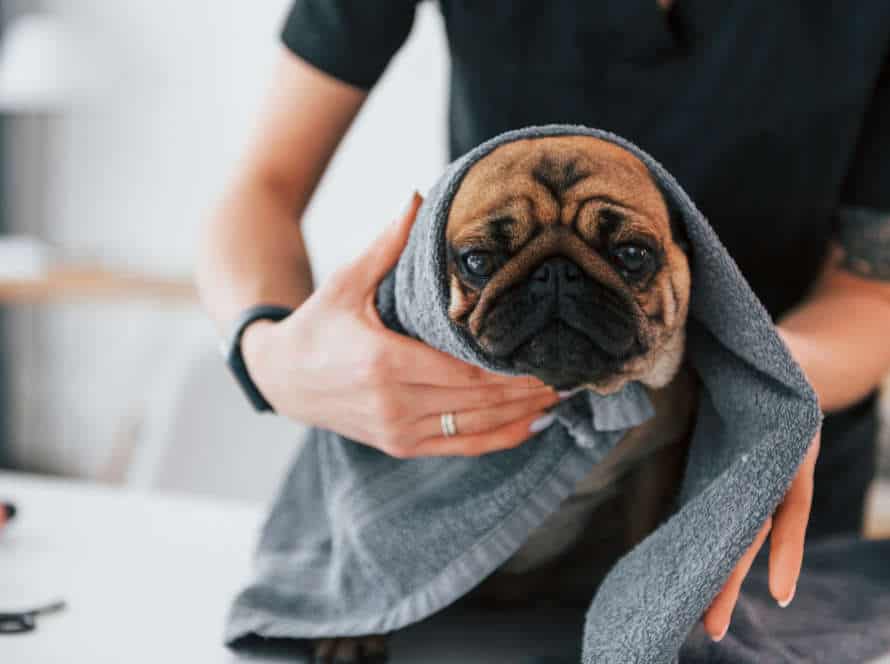Grooming Your Adult Dog: Tips for a Healthy, Happy Pet
Groom your adult pup regularly to keep them healthy and looking great! Here are a few tips:
- Brush their coat once a week to prevent matting and remove dead fur.
- Trim their nails every two to three weeks.
- Clean their ears often to avoid infection.
- Bathe them as necessary, but not too often.
- Check their skin for sores, rashes, or bumps regularly.
Grooming is important for your pup’s health and appearance!
Why Grooming is Important for Adult Dogs
Grooming is crucial for adult pups. It helps maintain a glossy coat and even hinders the chances of parasites and illness. Plus, it’ll keep your pup looking their best! Let’s discuss the importance of grooming for adult dogs and how to devise a good grooming routine.
Health Benefits of Regular Grooming
Groom your adult dog to reap the benefits! Physically and mentally, they’ll thank you. Here’s why:
- Coat and skin health up: Brushing removes dirt, debris, and dead hair. Plus, it boosts blood flow for a shinier coat.
- Hygiene is key: Bathing, trimming nails, cleaning ears – it all helps and prevents infections.
- Early detection: During grooming, check for lumps, bumps and other health concerns.
- Bonding time: Grooming is quality time plus sensory stimulation.
Regular grooming = healthy, happy, and comfortable pup!
Emotional Benefits of Grooming
Grooming your adult pup is essential for their well-being. Here are the emotional benefits it provides:
- Bonding: Grooming is great for creating a trustful relationship between you and your doggo. It strengthens the bond.
- Comfort: It’s very calming for dogs and it can make them feel secure. It also reduces stress and anxiety levels.
- Health: Good grooming can help detect skin issues or other health problems before they become serious.
Pro tip: Grooming can bring you closer and provide emotional and physical benefits for your faithful companion.
Common Health Issues in Adult Dogs that Grooming Can Help Prevent
Grooming is a must for your adult dog’s health and happiness. It can stop many health issues. Here are some common ones:
- Skin conditions: Grooming keeps parasites, infections, and allergies away.
- Dental problems: Brushing your pup’s teeth stops bad breath and diseases.
- Eye and ear infections: Wipe your dog’s eyes and ears to stop infections from dirt, debris, and bacteria.
- Joint pain and mobility issues: Massage your pup’s muscles to prevent joint pain and mobility issues.
Pro tip: Grooming not only helps your adult dog stay healthy, but it also strengthens the bond you share!
Basic Grooming for Adult Dogs
Grooming adult dogs is key for their health, joy and coziness. Brushing, bathing, trimming nails, cleaning ears and dental care are all essential parts of pampering your adult pup. Here, we’ll evaluate the significance of each activity and provide advice on grooming your adult dog proficiently.
Brushing Your Dog’s Coat
Properly brushing your pup’s fur is an important part of keeping them healthy. Here are some pointers:
- Choose the brush that’s right for your dog. Different breeds have different coats, so make sure you’re using the right one. For example, a slicker brush is great for dogs with long, curly hair and a bristle brush works well for short-haired breeds.
- Brush them weekly. This will help remove any loose fur, dirt and debris.
- Be gentle. You want to avoid any pain to their skin, so use treats and praise to make the process more comfortable.
- Look out for problem areas. Areas like under the armpits and around the ears can be tricky, so pay extra attention when brushing them.
Pro Tip: Grooming isn’t just about appearances. It’s also about giving your pup the best life possible. A healthy coat makes for a happy dog!
Bathing Your Dog
Groom your pup! Giving your doggo a bath is a must for adult pooches. To keep ’em healthy, happy and smelling their best, here’s what you should know:
- Brush fur before bathing to get rid of tangles and mats.
- Use lukewarm water and a dog-specific shampoo. Watch out not to get any in their ears, nose or mouth.
- Wash fur in sections and massage the shampoo in. Thoroughly rinse afterwards.
- Dry fur with a towel or a low-heat hairdryer. Avoid air-drying in chilly weather to prevent hypothermia.
- Remember to reward ’em with treats and praise throughout the bath. Make them associate the process with something positive.
Pro tip: Stick to a consistent bathing routine based on breed-specific requirements for optimal health and hygiene.
Trimming Your Dog’s Nails
Grooming your pup’s nails can appear intimidating, yet it is a must-do in adult dog care. Here’s how it’s done:
- Get your doggo comfy with paw and nail contact. Give treats and rewards for good behavior.
- Use doggy nail trimmers only, not human clippers.
- Place the trimmer near the nail tip but be careful not to cut the quick.
- Trim the nail at a small angle, then use a nail file to even the edges.
- Do each nail, taking pauses if your pup is stressed or upset.
Regular nail trimming prevents pain, injury and infection on your pup’s paws.
Cleaning Your Dog’s Ears
Clean your pup’s ears! It’s vital for their health and hygiene. Here’s how:
- Gather supplies – cotton balls, ear cleaning solution and treats.
- Hold pup’s head steady. Put the cleaning solution in their ear canal.
- Massage the base, then let pup shake head to remove excess liquid.
- Wipe away dirt from outer ear with cotton ball. Repeat on other ear.
Pro Tip: Keep pup’s ears clean and dry to avoid infections. Remove excess hair for better airflow and less moisture.
Brushing Your Dog’s Teeth
Brushing your pup’s chompers is a must for adult dogs! Not only does dental disease hurt, it can cause other health issues if not cared for. Use these tips to brush your dog’s teeth stress-free.
- Start slow – let your pup sniff and taste the toothpaste, so they know it’s safe.
- Use the right tools – soft-bristled toothbrush and dog toothpaste; no human toothpaste!
- Be patient – start with a few teeth and take it gradual. Positive reinforcement like treats and praises will help.
- Brush regularly – three to four times a week to keep dental hygiene on point.
Brushing your dog’s teeth doesn’t have to be a challenge! With these tips, it can be an enjoyable experience for both you and your furry pal!
Advanced Grooming Techniques for Adult Dogs
Groomin’ your adult dog? Advanced techniques are a must! Go beyond the basics – like brushin’, combin’, and nail trimmings. Keep your pup’s coat fresh and free of tangles, mats, and other messes. Here’re some of the most effective advanced groomin’ techniques. Include ’em in your pup’s routine for healthy and happy days.
Dealing with Matted Fur
Matted fur can be a problem for pooches, especially if they have long, curly or thick coats – and it can be uncomfortable or even hurtful. To tackle it, here are some advanced grooming methods:
- Apply a detangler spray or conditioner to make combing the matted fur easier.
- Begin with a wide-toothed comb and start from the ends, working up to the fur’s base.
- Use a slicker brush to remove lingering tangles and smooth out fur.
- If the mat is too tough, use scissors or clippers to delicately cut it out – but use caution as not to injure your pup.
Regular brushing and grooming can stop mats from forming and keep your pup’s coat healthy and glossy. Pro Tip: If the mat is near the skin, it’s best to get the assistance of a professional groomer or vet to avoid any harm.
Removing Tear Stains
Tear stains on dogs are a common problem. Caused by yeast and bacteria buildup in the corner of their eyes. There are several ways to remove and prevent them. Here are the most effective and safe methods:
- Regular Cleaning: Clean eyes gently with a damp cloth or cotton ball. Use warm water or saline solution.
- Shave Area: Consider shaving hair around the eyes. This prevents matting and reduces bacteria/yeast buildup.
- Dietary Changes: Feed a balanced, high-quality diet. Rich in protein, vitamins and minerals. This boosts immune system and reduces tearing.
- Avoid Certain Foods: Don’t feed foods that cause excessive tearing or allergies. For example, onions or dairy.
Note: Talk to a vet before changing your dog’s diet. Some may have health conditions that need special dietary restrictions.
Giving Your Dog a Professional Haircut
Groomin’ yer dog isn’t easy. Here’s some techniques to get a pro look:
- Invest in quality clippers, scissors, and brushes.
- Brush yer pup’s coat to remove tangles and mats.
- Use clippers for belly, legs, and neck.
- Scissors for face, ears, and tail.
- Don’t forget nail trimmin’.
- Bathe and dry, then brush fur for a smooth finish.
- Be patient, careful, and reward with treats and praise.
Best Practices for Grooming Your Adult Dog
Grooming your adult pup is essential! It keeps them healthy and clean, plus it helps reduce stress. Make sure to brush, bathe, and trim their nails regularly.
Discover the best practices for grooming your adult furry friend!
Choosing the Right Grooming Tools
Choosing grooming tools for your adult pooch is essential for their health and hygiene. Here are some tips:
- Coat type: Different dog breeds have different coats, e.g. curly, long, or short hair. Get grooming tools suitable for your pup’s coat type to avoid harming their skin.
- Brushing: Pick a good quality brush suited to your canine’s fur. Slicker brushes are great for removing tangles and mats in long-haired doggos. Rubber brushes work for short-haired breeds.
- Bathing: Get a mild dog shampoo, free from harsh chemicals and not too fragranced. Then choose a dog-specific conditioner to keep their coat shiny.
- Nail clipping: Use clippers designed for dog nails. Clippers come in different sizes for different breed sizes. Be careful not to cut the quick (the vein inside the nail).
Regular grooming is essential for their hygiene and health. Get advice from a professional groomer.
Pro Tip: If your dog has skin allergies or sensitive skin, ask your vet to select the best grooming tools and products.
Developing a Grooming Schedule
Creating a grooming schedule for your adult dog can help keep them healthy and happy. Here are some tips to follow:
- Brush their coat daily. Different coats need different brushes – ask a vet or pro groomer which one to use.
- Bathe them not too often – it can strip oils and cause dryness. Use a dog shampoo and rinse it off well.
- Trim their nails regularly – use a clipper designed for dogs, cut just below the quick.
- Clean their ears weekly – use a cotton ball or cloth with an ear cleaner made for dogs.
- Brush their teeth daily – use a toothbrush and toothpaste made for dogs.
Pro Tip: Grooming isn’t just about hygiene. Bond with your pet by rewarding them with treats and praise.
Making Grooming a Positive Experience for Your Dog
Grooming needn’t be a stressful experience for dogs. Follow these best practices, and it can be a positive, enjoyable time.
- Introduce it slowly, and use treats and praise as positive reinforcement.
- Get the right tools, like a soft-bristled brush or comb, pet-specific shampoo and conditioner.
- Groom in a quiet, comfy space where they feel secure.
- Take breaks, give them water and let them chill.
- Check their ears, teeth and paws regularly, as part of the grooming routine, for health maintenance.
- Most importantly, be patient and kind.
And, to finish on a high, give them a treat or take them for a walk.
Grooming Tips for Specific Breeds of Adult Dogs
Groom your adult dog properly! Different breeds need different routines. Here are some tips and advice.
- Bathe them.
- Brush their fur.
- Trim their nails.
- Clean their ears.
To keep your pup healthy, happy and looking their best, follow these steps. Let’s start now!
Grooming Tips for Long-Haired Breeds
Looking after long-haired adult dogs needs regular hair care. Here are some tips that can help you look after your pup’s coat and keep them happy and healthy.
- Brush their hair every day. Depending on hair length and texture, choose the right brush.
- Trim their hair when needed. This can help with coat health and stop bacteria and yeast from growing.
- Bathe them regularly. This keeps skin and coat clean, healthy and free from smell.
- Check for pests. Long-haired breeds are more likely to have fleas and ticks. Remove them fast.
- Clean their ears. Bacteria and yeast can grow in ears. Regular cleaning helps avoid infections.
- Pro Tip: Get the right tools like grooming shears, combs and brushes for coat health.
Grooming Tips for Short-Haired Breeds
Short-haired dog breeds require minimal grooming, compared to long-haired breeds. But, basic grooming can keep their coat healthy and shiny. Here are a few tips:
- Brushing: Use a soft-bristled brush for dead or loose hair. A rubber brush can also massage the skin and promote good blood circulation.
- Bathing: Short-haired breeds need fewer baths than long-haired breeds. Mild dog shampoo can keep their coat clean and healthy.
- Nail Trimming: Trim your dog’s nails once a month with a sharp and appropriate dog nail clipper.
- Ear Cleaning: Clean your dog’s ears regularly with an ear cleaning solution and a cotton ball or a soft cloth.
- Dental Care: Brush your dog’s teeth regularly with dog-specific toothpaste and a soft-bristled toothbrush.
These simple grooming practices will keep your short-haired dog healthy and happy!
Grooming Tips for Curly and Wavy Coated Breeds
Curly and wavy-coated breeds need special grooming techniques to keep their coat healthy and looking great. Here are some tips:
- Brushing: Use a slicker brush. Comb the coat in small sections to avoid matting and take out loose hair.
- Bathing: Use a shampoo made for curly or wavy coats. Bathe your pup every 2–3 months or as needed.
- Drying: Use a high-velocity dryer, not air-dry, to stop matting.
- Trimming: Regular trimming is key to avoiding matting and keeping the coat healthy. Get help from a pro groomer for the right coat length and style.
Pro Tip: Don’t use human hair products and tools on your pup’s coat. Stick with dog-specific products and tools to stay clear of skin irritation and coat damage.
Grooming Your Senior Dog
Grooming an elderly pup can be tricky. Their fur may become sparse and their skin might be extra sensitive. And, standing or staying still for long periods may be a challenge. Yet, not all dogs are the same. Some may take to grooming with ease, even in their golden years. So, let’s explore some tips for grooming your aging pup.
Special Considerations for Grooming Senior Dogs
When grooming senior dogs, extra care is necessary. They may have sensitive skin, achy joints, and low mobility. Here are some tips to keep them comfy and healthy:
- Use soft brushes and combs to avoid irritating their skin.
- Be gentle when handling their joints and muscles – no pulling or stretching.
- Wash with lukewarm water and mild shampoos to prevent drying out their skin.
- Dry them thoroughly after bathing, so they don’t get cold.
- Trim nails and hair more often – they may grow slower and thicker due to aging.
- Check and clean their eyes, ears, and teeth regularly to prevent infections and dental issues.
Health Issues to Look for When Grooming Senior Dogs
As our four-legged friends get older, they need special grooming. Here’re the health issues to check out when grooming senior dogs for their good health and joy.
- Mobility: When aging, pooches may have joint pain and stiffness that can make grooming hard or painful. Look for signs that your older dog is having difficulty to move or stand while being groomed.
- Skin: Elderly dogs can be prone to skin troubles, such as dryness, infections, and hot spots. Inspect your dog’s skin while grooming for any redness or bumps.
- Teeth: Dental issues are common in senior dogs, like gum disease, wobbly teeth, and bad breath. Make sure to check your dog’s teeth and gums during grooming.
- Weight: Senior dogs may have altered appetite and metabolism that can lead to weight increase or decrease. Monitor your pup’s weight during grooming, and speak with your vet about changes.
- Sight & Hearing: Older dogs may lose sight and hearing which can affect their grooming. Be aware of any behavior or communication alterations while grooming.
These tips can help you maintain your senior dog’s health and well-being during grooming sessions.
Adjusting Your Grooming Routine for Senior Dogs.
Caring for senior dogs’ grooming needs is important for their aging bodies and overall health. Here are some tips:
- Brush them regularly with a soft brush to get rid of loose fur, stop matting, and help their skin and coat stay healthy.
- Bathe them using lukewarm water and mild shampoo that won’t irritate their skin. Dry them gently with a towel, not a hairdryer.
- Trim their nails carefully as they can become more brittle. Use clippers designed for senior pets.
- Keep their ears clean with gentle ear cleaners.
- Brush their teeth and visit the vet for dental cleaning.
Looking after your senior dog’s grooming needs makes them more comfortable and healthy in their later years.
Frequently Asked Questions
1. How often should I groom my adult dog?
It depends on the breed and coat type of your dog. Dogs with shorter coats may only require grooming once a month, while dogs with longer coats may need grooming once a week.
2. Can I groom my dog at home?
Yes, you can groom your dog at home. However, it’s important to use the right tools and techniques to avoid injuring your pet.
3. What are some basic grooming tools I will need?
You will need a comb, brush, nail trimmer, and shampoo designed for dogs.
4. Why is it important to trim my dog’s nails?
Trimming your dog’s nails is important for their overall health and wellbeing. Long nails can cause discomfort and even lead to joint problems in your pet.
5. How often should I bathe my dog?
Bathing your dog should be done on an as-needed basis. Too much bathing can strip away natural oils in the dog’s coat and lead to skin irritation.
6. Can grooming help detect health problems in my dog?
Yes, regular grooming can help you detect any changes in your dog’s skin, coat, and overall health. It’s important to keep an eye out for anything unusual during your grooming sessions.

